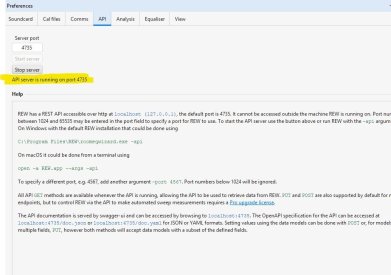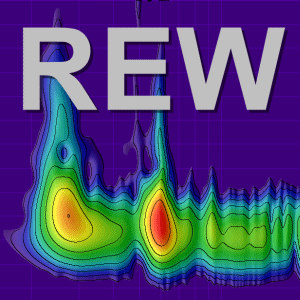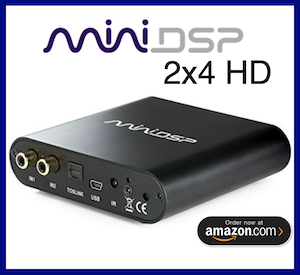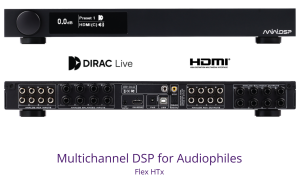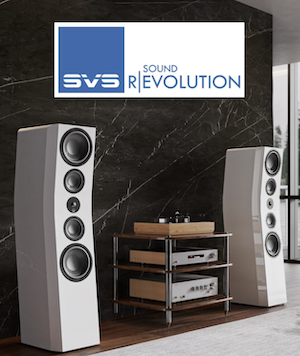-
AUDIO VIDEO PROCESSING, SETUP & ENVIRONMENTOfficial REW (Room EQ Wizard) Support Forum Audiolense User Forum Calibration Equipment Auto-EQ Platforms / Immersive Audio Codecs Video Display Technologies / Calibration AV System Setup and Support Listening Room / Home Theater Build Projects Room Acoustics and Treatments AV Showcase Movies / Music / TV / Streaming
-
AUDIO VIDEO DISCUSSION / EQUIPMENTHome Theater / Audio and Video - Misc Topics Essence For Hi Res Audio AV Equipment Advice and Pricing Awesome Deals and Budget AV Equipment AV Receivers / Processors / Amps UHD / Blu-ray / CD Players / Streaming Devices Two Channel Hi-Fi Equipment DIY Audio Projects Computer Systems - HTPC / Gaming HD and UHD Flat Screen Displays Projectors and Projection Screens AV Accessories Buy - Sell - Trade
Navigation
Install the app
How to install the app on iOS
Follow along with the video below to see how to install our site as a web app on your home screen.
Note: This feature may not be available in some browsers.
More options
You are using an out of date browser. It may not display this or other websites correctly.
You should upgrade or use an alternative browser.
You should upgrade or use an alternative browser.
REW Beta Release REW API beta releases
- Thread starter John Mulcahy
- Start date
user44455555
Registered
- Joined
- Jan 16, 2021
- Posts
- 167
That's because you set the time range to just 8 ms, so there is no data to work with. Don't do that.
I did not know how it change to 8 ms, but i test a older REW version, it do no such array out of bound error. I notice in new REW version from 20ms work ok.
John Mulcahy
REW Author
Thread Starter
- Joined
- Apr 3, 2017
- Posts
- 9,001
The list of files from the OS can be in just about any order, I haven't found any logic to it. REW sorts them alphabetically by name for imports or by date for mdat files.Feature request: This is gonna sound dumb considering all the complex stuff REW can do, but can we get an option to just sort the measurements how they're sorted when dragging and dropping data?
Oh, I know REW sorts when importing,The list of files from the OS can be in just about any order, I haven't found any logic to it. REW sorts them alphabetically by name for imports or by date for mdat files.
Here's a use case - if someone takes a bunch of measurements for spatial averaging, and then wants to group the channels together and order by position, the easiest approach is exporting impulse responses to text and then re-importing, which loses some resolution. It would be useful if there was just a button to sort the currently loaded measurements in REW.
John Mulcahy
REW Author
Thread Starter
- Joined
- Apr 3, 2017
- Posts
- 9,001
I could add a button on the All SPL and Overlay graphs to sort all measurements alphabetically, there isn't room above the individual selector list when it is in compact mode. Any measurements in a group would be sorted within that group.
Getting a strange EQ result for this particular subwoofer. I used the -3dB points as the start and end freq, allowed minimal boost. Speaker type is set as none since I am trying to EQ via the API. Also, I don't always get the same results between API and EQ tab. In my code I allow narrow filters below 200hz, but when doing it manually, I have to disable it to get the same result. Here are the parameters I'm using in the code -

Mdat is attached.
JavaScript:
await postSafe(`http://localhost:4735/eq/match-target-settings`, {
startFrequency: m3dBPoints[i][0],
endFrequency: m3dBPoints[i][1],
individualMaxBoostdB: 3,
overallMaxBoostdB: movieMode ? 1 : 0,
flatnessTargetdB: 1,
allowNarrowFiltersBelow200Hz: true,
varyQAbove200Hz: false,
allowLowShelf: false,
lowShelfMin: -3,
lowShelfMax: 3,
allowHighShelf: movieMode && !isSub,
highShelfMin: -3,
highShelfMax: 3
}, "Update processed");
try {
await postNext('Match target', i);
}
catch (error) {
// not really an issue if it fails
console.debug(`${commandId[i]} could not be equalized!`);
}Mdat is attached.
Attachments
John Mulcahy
REW Author
Thread Starter
- Joined
- Apr 3, 2017
- Posts
- 9,001
Manual and API give identical results for me.Getting a strange EQ result for this particular subwoofer.
I don't understand that comment. When using the API the target settings are configured at /measurements/id/room-curve-settings, /measurements/id/target-settings and /measurements/id/target-level, but if they are not the same as those you use manually you will not get the same result.Speaker type is set as none since I am trying to EQ via the API.
So the speaker type is set as None instead of “Full Range” or “Bass Limited” or “Subwoofer”. The equalizer type is also “Generic”. At the beginning of my code, these values are set to both the default EQ and the measurements/id/eq. Here’s the part of the code that’s doing it - https://github.com/navid0308/A1Evo_...20458976b96f743e95/A1Evo_MJ_Custom.html#L8794Manual and API give identical results for me.
I don't understand that comment. When using the API the target settings are configured at /measurements/id/room-curve-settings, /measurements/id/target-settings and /measurements/id/target-level, but if they are not the same as those you use manually you will not get the same result.
I retried it on a Mac and got the same results this time using API vs manually using the EQ tab. The main issue is that I’m not quite understanding why it’s settling on the filters that it is - it’s introducing a peak at 20hz and I can’t fathom why…
John Mulcahy
REW Author
Thread Starter
- Joined
- Apr 3, 2017
- Posts
- 9,001
Don't forget the room curve settings, target level and house curve if you use one. The predicted response in the mdat you attached suggests either room curve was active or a house curve was loaded.
Yeah those are also being kept the same. The script creates a b&k like room curve if user provides no house curve. If it gets a house curve, it disables the room curve.Don't forget the room curve settings, target level and house curve if you use one. The predicted response in the mdat you attached suggests either room curve was active or a house curve was loaded.
I think I know what the issue is…since the speaker type is none, I think it’s expecting the target and the SW response to line up in the midrange. Everytime I try manually, it says that target level is way higher than response level (SW response is just noise floor in the midrange).
So it’s probably thinking that it needs to boost the response a lot to get to target. Is this expected behavior? I am specifying the start and end frequencies using the -3dB points for EQ - does that not limit how REW determines the target level?
John Mulcahy
REW Author
Thread Starter
- Joined
- Apr 3, 2017
- Posts
- 9,001
The message about the target level has no effect on the EQ behaviour.
The filters in the mdat you attached were not generated with a flat target, something else was included in the target when they were generated. This is what a flat target produces:

The filters in the mdat you attached were not generated with a flat target, something else was included in the target when they were generated. This is what a flat target produces:
No. If the target is full range or none the level is based on the response between 200 Hz and 2 kHz. For subwoofer targets the range depends on the sub LF cutoff and the bass management cutoff. For bass limited targets the lower end of the range depends on the bass management cutoff and the upper end is 2 kHz. For driver targets the range depends on the driver crossover frequencies. The target should reflect the measurement.I am specifying the start and end frequencies using the -3dB points for EQ - does that not limit how REW determines the target level?
I should've clarified, the target is the response that's called "final". In the mdat it's leveled to 75db but here's the text file I have been using.The message about the target level has no effect on the EQ behaviour.
The filters in the mdat you attached were not generated with a flat target, something else was included in the target when they were generated. This is what a flat target produces:
View attachment 85222
No. If the target is full range or none the level is based on the response between 200 Hz and 2 kHz. For subwoofer targets the range depends on the sub LF cutoff and the bass management cutoff. For bass limited targets the lower end of the range depends on the bass management cutoff and the upper end is 2 kHz. For driver targets the range depends on the driver crossover frequencies. The target should reflect the measurement.
But the last section of your message is very helpful. Seems like I will need to play around with the speaker type parameters before asking REW to match target instead of just going with None. I think that's the piece I was missing.
Attachments
John Mulcahy
REW Author
Thread Starter
- Joined
- Apr 3, 2017
- Posts
- 9,001
Do you mean the measurement notes? You can choose to show them in the View preferences:I've switched to the beta, but the new method of accessing the measurement descriptions by right-clicking is much more error-prone than the old way. I keep right-clicking and then accidentally activating something in the context menu, etc.
Do you mean the measurement notes? You can choose to show them in the View preferences:
That's good, but I still need to right-click to edit them, which puts random things under my mouse cursor and I end up clicking things by accident. Or maybe it's happening when I try to click outside of the context menu to close it, but accidentally open a sub-menu first by hovering over it?
klazing
Registered
- Joined
- Mar 6, 2025
- Posts
- 8
More
- Preamp, Processor or Receiver
- Denon X1800H
- Main Amp
- Denon X1800H
- DAC
- Fiio
John Mulcahy
REW Author
Thread Starter
- Joined
- Apr 3, 2017
- Posts
- 9,001
The error message shows port 3000 but the server is running on port 4735.The rew API server is running but inaccessible.
John Mulcahy
REW Author
Thread Starter
- Joined
- Apr 3, 2017
- Posts
- 9,001
I have no idea what code you are running that wants to talk to the API server, who wrote it, or what it is expecting. Ask the author of that code.It's always been like this and it's been working fine. I don't think there's a problem with it. Can you tell me what to do?
John Mulcahy
REW Author
Thread Starter
- Joined
- Apr 3, 2017
- Posts
- 9,001
Builds updated today (beta 97) with these changes:
- Added: All SPL and Overlay graph measurement lists have a button to sort the measurements alphabetically by name, if the names are the same they are sorted by date
- Added: Localisation bundle files for Traditional Chinese (Taiwan)
- Added: Properties bundle files status.properties, audio.properties, fsaf.properties, preferenceheadings.properties
- Changed: Additional entries in these bundle properties files: graphs, menu, graphbuttons, measure, roomsim, rta, equaliser, groups
- Changed: Minimum time range for RT60 Decay waterfall set to 100 ms
- Fixed: STI calculation would not run for impulse responses at 32 kHz unless the measurement was log spaced
- Fixed: IllegalAccessError could occur when opening mdat files after upgrading to V5.40 if the installer failed to delete the old glazedlists-1.11.0.jar file
- Fixed: Match target could be too strict when preventing filters switching from boost to cut and vice versa
- Fixed: The impulse response span of a trace arithmetic result could be longer than it should be
Last edited:
I only see Chinese in the installer,also i need phase +360 -360 and unwarp back plzBuilds updated today (beta 97) with these changes:
- Added: All SPL and Overlay graph measurement lists have a button to sort the measurements alphabetically by name, if the names are the same they are sorted by date
- Added: Localisation bundle files for Traditional Chinese (Taiwan)
- Added: Properties bundle files status.properties, audio.properties, fsaf.properties, preferenceheadings.properties
- Changed: Additional entries in these bundle properties files: graphs, menu, graphbuttons, measure, roomsim, rta, equaliser, groups
- Changed: Minimum time range for RT60 Decay waterfall set to 100 ms
- Fixed: STI calculation would not run for impulse responses at 32 kHz unless the measurement was log spaced
- Fixed: IllegalAccessError could occur when opening mdat files after upgrading to V5.40 if the installer failed to delete the old glazedlists-1.11.0.jar file
- Fixed: Match target could be too strict when preventing filters switching from boost to cut and vice versa
- Fixed: The impulse response span of a trace arithmetic result could be longer than it should be
John Mulcahy
REW Author
Thread Starter
- Joined
- Apr 3, 2017
- Posts
- 9,001
Translations are only available for machine locale zh_TW, zh_CN will be in the next release.I only see Chinese in the installer
Nothing has been removed, right click on the graph. Please read the list of changes: What's new in REW V5.40i need phase +360 -360 and unwarp back plz
HD MOVIE SOURCE
Member
- Joined
- Jun 23, 2021
- Posts
- 58
More
- Preamp, Processor or Receiver
- Denon x6500h
- Universal / Blu-ray / CD Player
- Panasonic UB9000
The rew API server is running but inaccessible. This happened after installing Windows 11. Could this be related? I'm asking for help.
You could be getting this error due to improper speaker naming. I think, give it a look and see.
Joffieb
Member
- Joined
- Sep 12, 2021
- Posts
- 49
More
- Preamp, Processor or Receiver
- Rotel RC995
- Main Amp
- Rotel RB981
- DAC
- Modi 3
- Streaming Equipment
- Audioengine B-Fi
- Streaming Subscriptions
- Tidal, Spotify
- Front Speakers
- B&W 685s2
- Subwoofers
- AE Aegis Neo V2
- Other Equipment
- MiniDsp nanoDigi 2x8
Hi,
How do we now smooth all measurements in the all SPL window without the actions bar? Tried selecting all and smoothing but it didn't work.
Thanks
How do we now smooth all measurements in the all SPL window without the actions bar? Tried selecting all and smoothing but it didn't work.
Thanks
Popular tags
20th century fox
4k blu-ray
4k uhd
4k ultrahd
action
adventure
animated
animation
bass
blu-ray
calibration
comedy
comics
denon
dirac
dirac live
disney
dolby atmos
drama
fantasy
hdmi 2.1
home theater
horror
kaleidescape
klipsch
lionsgate
marantz
movies
onkyo
paramount
pioneer
rew
romance
sci-fi
scream factory
shout factory
sony
stormaudio
subwoofer
svs
terror
thriller
uhd
ultrahd
ultrahd 4k
universal
value electronics
warner
warner brothers
well go usa








